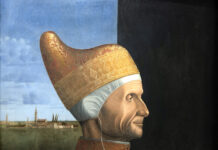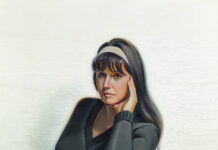Today, not nearly enough Americans realize that Cincinnati was once hailed as the “Queen City of the West”: It was one of the key centers of 19th-century America thanks to its superb transport links and its position on the edge of what was then the frontier.
Founded during this golden age, in 1881, was the Cincinnati Art Museum, which now surveys the city from its hilltop perch. At the “CAM” are more than 60,000 artworks spanning 6,000 years of world history, though out-of-towners are particularly intrigued by the Cincinnati Wing, which showcases the talents who originated or flourished here in the 19th and early 20th centuries. Among them were Frank Duveneck, Elizabeth Nourse, J.H. Twachtman, and Hiram Powers, as well as Maria Longworth Nichols, whose Rookwood Pottery featured prominently in America’s Arts & Crafts movement.
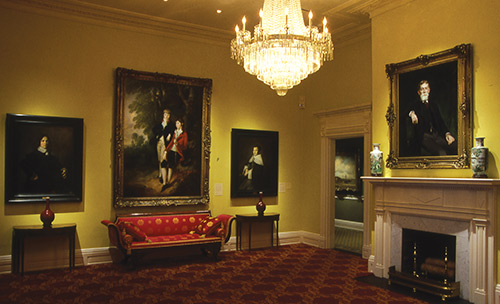
The Taft Museum of Art’s Music Room: Thomas Gainsborough’s “Edward and William Tomkinson” (c. 1784) is surrounded by two Frans Hals portraits (c. 1650); over the fireplace hangs Raimundo de Madrazo Garretta’s portrait of Charles Taft (1902). Photo: Tony Walsh.
Equally beloved is downtown’s Taft Museum of Art, a graceful villa (c. 1820) opened to the public in 1932 to showcase the historical masterworks acquired by Charles and Anna Taft. Now numbering 700, the collection ranges from Renaissance enamels to Chinese porcelains to paintings by Rembrandt and Whistler.
Not far from the Taft are other artistic attractions. Founded in 1939, the Contemporary Arts Center is a non-collecting presenter of innovative art from elsewhere, housed in a still-edgy 2003 building designed by the late Iraqi-born architect Zaha Hadid. Across the street, inside the multi-disciplinary Aronoff Center for the Arts is the Weston Art Gallery, which presents free contemporary exhibitions.

Façade of the Contemporary Arts Center, designed by Zaha Hadid. Photo: Roland Halbe.
Established as early as 1869, the Art Academy of Cincinnati teaches thousands annually, and hosts exhibitions of faculty and student art in its Pearlman and Chidlaw Galleries. Be sure to visit Cincinnati Art Galleries, which handles traditional, modern, and contemporary American and European paintings, Western and sporting art, and decorative arts, with a strong accent on Cincinnati and Midwestern material. Nearby is the 5th Street Gallery, a collaborative of artists working in diverse media. While downtown, be sure to check out the rotating displays of cutting-edge art in the public rooms of the 21c Museum Hotel, one in a growing chain of hip boutique hotels.
The charming neighborhood of Hyde Park offers a cluster of galleries to explore. Malton Gallery features work by nearly 100 contemporary artists, while Mary Ran Gallery handles the estates of important modernists, as well as 19th- and 20th-century American and European material and contemporary artists like Chuck Marshall. Miller Gallery shows work made by artists living now around the corner and around the world. Operated by the dean of Cincinnati’s dealers, Phyllis Weston Gallery emphasizes the cutting-edge, but look out for the superb landscapes of artists like Cole Carothers. Though admired locally for art and antiques, Treadway Gallery has built a national following by collaborating with John Toomey Gallery of Oak Park, Illinois, on auctions heavy on the Arts & Crafts period.
Several important venues are scattered around the region. Located just off Wooster Pike, Eisele Gallery of Fine Art is renowned for both historic paintings and contemporary ones by such talents as Howard Behrens, John Michael Carter, and MaryBeth Karaus. Rottinghaus Gallery, in the O’Bryonville area, has both historical and contemporary artists, with strength in those from Ohio, Kentucky, and Indiana. On Findlay Street, Carl Solway Gallery handles blue-chip contemporary art leaning toward the cutting-edge, and in the historically German neighborhood of Over the Rhine, Clay Street Press makes and sells hand-pulled prints. Established in 1890, the Cincinnati Art Club on Parkside has long offered camaraderie to its members, but also free exhibitions of contemporary art in its Wessel Gallery. In the evolving neighborhood of East Walnut Hills, Manifest is a force for change through art, and has developed expertise in exhibiting realist work by local talents.
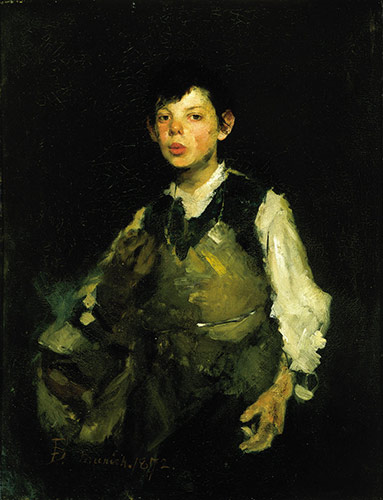
Frank Duveneck (1848-1919), “Whistling Boy,” 1872, oil on canvas, 27 7/8 x 21 1/8 in. (c) Cincinnati Art Museum 2016
Greenwich House Gallery specializes in contemporary plein air painting, and has enjoyed particular success representing Camille Pissarro’s great-grandson Frederic Bonin Pissarro, who often paints Paris. One of the area’s oldest firms is The Miller Gallery, founded in 1960 by Gary Gleason and Laura Miller Gleason; their contemporary inventory encompasses local artists as well as international ones from as far away as Israel, with particular strength in sculpture.
On the campus of the University of Cincinnati are two galleries operated by its College of Design, Architecture, Art, and Planning (DAAP). Opened in 1971, Row House Gallery is located in the historic eastside neighborhood of Milford and offers an eclectic display of paintings and prints. Finally, in the northeastern suburb of Indian Hill, the Greenacres Foundation runs the Greenacres Arts Center, an elegant 1927 mansion set on 600 acres of woodland and farmland. Here everyone can learn about nature, horses, and art, including the 26 local artists who make up the Greenacres Artists Guild.
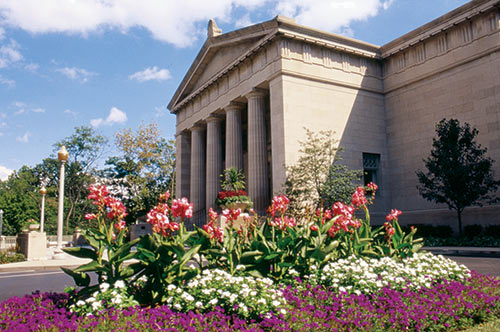
The Cincinnati Art Museum’s Façade
The past and present of murals are ably demonstrated in Cincinnati. The magnificent, jukebox-shaped Union Terminal no longer welcomes trains, but it does welcome hundreds of thousands of visitors to enjoy its newer role as the Cincinnati Museum Center. Inside are several institutions, including the Cincinnati History Museum, and also the remarkable murals created by Winold Reiss and Pierre Bourdelle. This tradition is alive and well in Cincinnati today thanks to ArtWork’s Mural Art program, which has created more than 100 murals in 36 neighborhoods over the past six years. Among their subjects are such famous Cincinnatians as singer James Brown, artist Tom Wesselmann, and the sharpshooter Annie Oakley, who actually took her stage name from the Oakley neighborhood. In a similar vein, be sure to visit the American Sign Museum, which opened its permanent home in 2012 in the up-and-coming area of Camp Washington.
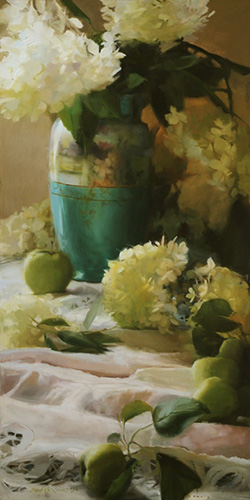
MaryBeth Karaus, “Lush Life,” oil, 48 x 24 in. (c) MaryBeth Karaus 2016
Finally, if you want to take home another souvenir of your Cincinnati visit, check the sale schedule at Cowan’s Auctions, which handles a broad range of American and European paintings and sculpture, military collectibles and political memorabilia, early photography, American Indian artifacts, and antique furniture.
This article was featured in Fine Art Today, a weekly e-newsletter from Fine Art Connoisseur magazine. To start receiving Fine Art Today for free, click here.


